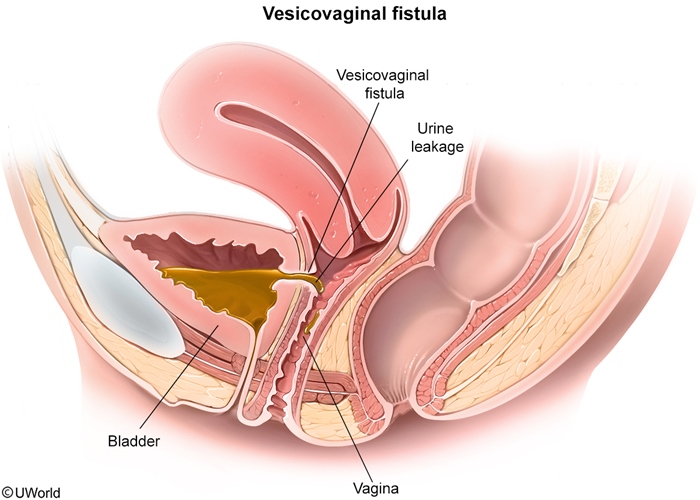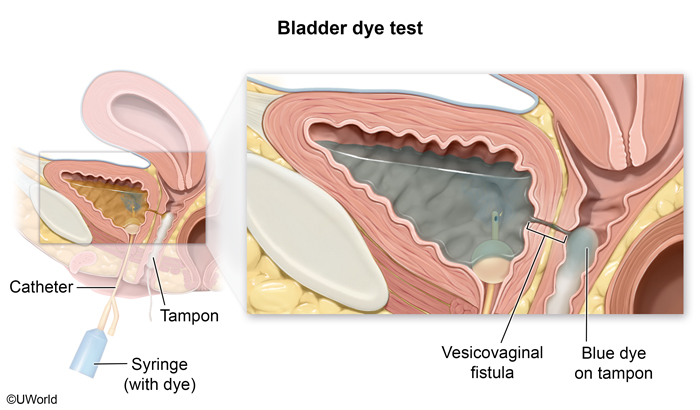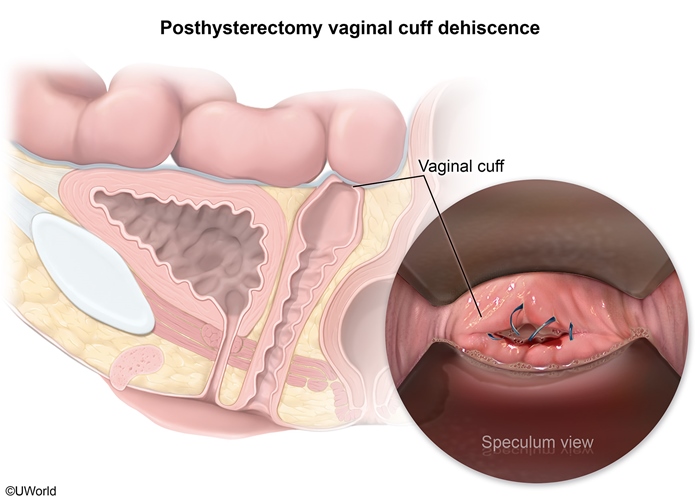Vesicovaginal Fistula
Article Sections
Introduction
A vesicovaginal fistula (VVF) is an aberrant, epithelium-lined connection between the bladder and the vagina. This condition occurs after trauma (eg, gynecologic surgery, obstetric trauma, radiation) and often leads to continuous, painless leakage of urine.
Pathophysiology and risk factors
The proximity of the bladder and vagina makes them vulnerable to fistulization, and VVF develops due to tissue necrosis caused by prolonged pressure, ischemia, infection, or direct injury to these structures. The most common etiologies are obstetric trauma, gynecologic surgery, and pelvic radiation.
- In obstetric cases, obstructed labor leads to ischemic necrosis of the vesicovaginal septum.
- In surgical or radiation-induced cases, the direct insult or compromised vascular supply causes tissue breakdown and fistula formation.
Patients develop symptoms with variable time frames:
- Immediately following intraoperative bladder injury (eg, cesarean delivery, hysterectomy)
Continue Learning with UWorld
Get the full Vesicovaginal Fistula article plus rich visuals, real-world cases, and in-depth insights from medical experts, all available through the UWorld Medical Library.
Figures


